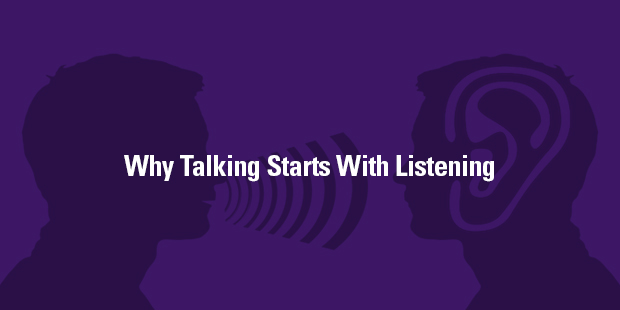Some church leaders consider “brand” to be a four-letter word more appropriate in the marketplace than for churches. The concept of branding has undergone changes in the last decade that demand church leaders not only accept them, but also lead forward through them.
Branding in today’s cultural context is less “this is what we can do for you” and more “this is who we are.” Here is the challenge: your brand isn’t what you say it is; it’s what your “customers” say it is. (If you want to read more about this, download SUMS Remix 81).
THE QUICK SUMMARY
What makes things popular? If you said advertising, think again. People don’t listen to advertisements; they listen to their peers. But why do people talk about certain products and ideas more than others? Why are some stories and rumors more infectious? And what makes online content go viral?
Wharton marketing professor Jonah Berger has spent the last decade answering these questions. He’s studied why New York Times articles make the paper’s own Most E-mailed list, why products get word of mouth, and how social influence shapes everything from the cars we buy, to the clothes we wear, to the names we give our children.
In Contagious, Berger reveals the secret science behind word-of-mouth and social transmission. Discover how six basic principles drive all sorts of things to become contagious, from consumer products and policy initiatives to workplace rumors and YouTube videos. Learn how a luxury steakhouse found popularity through the lowly cheesesteak, why anti-drug commercials might have actually increased drug use, and why more than 200 million consumers shared a video about one of the most seemingly boring products there is: a blender.
Contagious provides a set of specific, actionable techniques for helping information spread—for designing messages, advertisements, and content that people will share. Whether you’re a manager at a big company, a small business owner trying to boost awareness, a politician running for office, or a health official trying to get the word out, Contagious will show you how to make your product or idea catch on.
A SIMPLE SOLUTION
People love to be a part of stories, and to tell stories – the latest “news” on the neighborhood, a great new restaurant opening nearby, the awesome vacation they just returned from.
People also like to tell the darker side of stories – gossip, a terrible meal experience, or the lousy and expensive vacation they had.
Then there are the online stories: social proof, provided by peer-to-peer recommendations of products and services, is a powerful way to persuade your potential customers.
Take a look at these results about online reviews by BrightLocal, a social media agency:
- 84% of people trust online reviews as much as a personal recommendation
- 90% of consumers read less than 10 reviews before forming an opinion about a business
- 74% of consumers say that positive reviews make them trust a local business more
- 58% of consumers say that the star rating of a business is most important
Word of mouth – literally, in conversations face to face, or figuratively, in online conversations, is a primary factor behind many of the decisions we are making everyday.
How can your church tap into this important vehicle of conversation going on all around you?
After analyzing hundreds of contagious messages, products, and ideas, we noticed that the same six “ingredients,” or principles, were often at work. Six key STEPPS, as I call them, that cause things to be talked about, shared, and imitated.
Principle 1: Social Currency
How does it make people look to talk about a product or idea? What we talk about influences how others see us. It’s social currency. So to get people talking we need to craft messages that help them achieve these desired impressions. We need to find our inner remarkability and make people feel like insiders.
Principle 2: Triggers
How do we remind people to talk about our ideas and products? Triggers are stimuli that prompt people to think about related things. People often talk about whatever comes to mind, so we need to design ideas that are frequently triggered by the environment and create new triggers to prevalent cues in that environment. Top of mind leads to tip of tongue.
Principle 3: Emotion
When we care, we share. So how can we craft messages and ideas that make people feel something? Emotional things often get shared. So rather than harping on function, we need to focus on feelings.
Principle 4: Public
Can people see when others are using our product or engaging in our desired behavior? Making things more observable makes them easier to imitate, which makes them more likely to become popular. So we need to make our ideas and products more public.
Principle 5: Practical Value
How can we craft content that seems useful? Given how people are inundated with information, we need to make our message stand out. We need to highlight the incredible value of what we offer, and package our knowledge and expertise so that people can easily pass it on.
Principle 6: Stories
What broader narrative can we wrap our idea in? People just don’t share information, they tell stories. We need to make our message so integral to the narrative that people can’t tell the story without it.
Jonah Berger, Contagious: Why Things Catch On
A NEXT STEP
The six principles of contagiousness listed above contain Social Currency and are Triggered, Emotional, Public, Practically Valuable, and should be wrapped in Stories. Enhancing these components in messages, products, or ideas will make them more likely to spread and become popular.
While it is convenient to imagine the six steps as the acronym STEPPS, don’t think of them as a “recipe” that has to be followed precisely. Not all six ingredients are required to make an idea contagious. View them more like toppings for a salad: choose what works for you, fits your situation, and you will still have a good result.
Write the following on the top of six chart tablets, one principle per page, allowing plenty of space for notes.
Principle 1: Social Currency
How can we talk about our church in such a way that unchurched people desire to be connected?
Principle 2: Triggers
What community triggers have we created to raise our visibility? How can we share the gospel in ways that trigger engagement?
Principle 3: Emotion
What messages are we sending that connect people emotionally?
Principle 4: Public
How can people see when others are excited about what God is doing? How are we leveraging sharable media?
Principle 5: Practical Value
What gospel content have we created that is useful to people outside of the church?
Principle 6: Stories
What larger cultural context exists in our community? How are we communicating the gospel as the solution?
Set aside a two-hour brainstorming time with your leadership team, and work through each of the questions listed.
After working through all six questions, go back and highlight the top three ideas or actions the group agrees are most important.
Create a cross-functional work group, bringing in other leaders and church members as appropriate, to take the resulting 18 ideas and actions and create an action plan with timetables and responsibilities.
As each idea or action is completed, evaluate its effectiveness and adjust as needed.
Excerpt taken from SUMS Remix Issue 83-1, released January 2018.
This is part of a weekly series posting excerpts from one of the most innovative content sources in the church world: SUMS Remix book excerpts for church leaders.
SUMS Remix takes a practical problem in the church and looks at it with three solutions; each solution is taken from a different book. Additionally, a practical action step is included with each solution.
As a church leader you get to scan relevant books based on practical tools and solutions to real ministry problems, not just by the cover of the book. Each post will have the edition number which shows the year and what number it is in the overall sequence. (SUMS Remix provides 26 issues per year, delivered every other week to your inbox).
> > Subscribe to SUMS Remix <<

Tags: Brand, Communication, Contagious, Jonah Berger
|
What is MyVisionRoom? > | Back to Communication >
















 ). Over eight of ten pastors indicated they had made significant changes to their sermon length in their ministries. There were a number of reasons for the changes, but the most common was adapting to listening patterns of the congregation.
). Over eight of ten pastors indicated they had made significant changes to their sermon length in their ministries. There were a number of reasons for the changes, but the most common was adapting to listening patterns of the congregation. ). The median length of the sermon of those surveyed was 27 minutes, down from 29 minutes four years ago.
). The median length of the sermon of those surveyed was 27 minutes, down from 29 minutes four years ago.
 ). Fewer than five percent of the pastors who responded preach sermons whose length is an outlier because of its brevity or longer length. The number of outliers has not changed significantly, but the advocates of either extreme tend to be clear and eager to verbalize the benefits of their sermon lengths.
). Fewer than five percent of the pastors who responded preach sermons whose length is an outlier because of its brevity or longer length. The number of outliers has not changed significantly, but the advocates of either extreme tend to be clear and eager to verbalize the benefits of their sermon lengths.
















